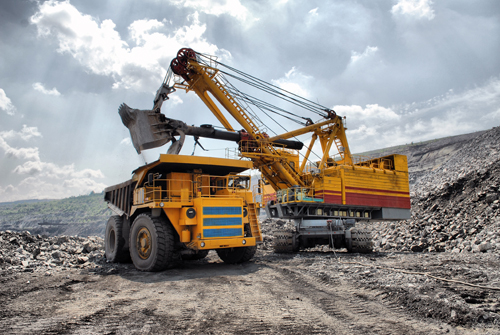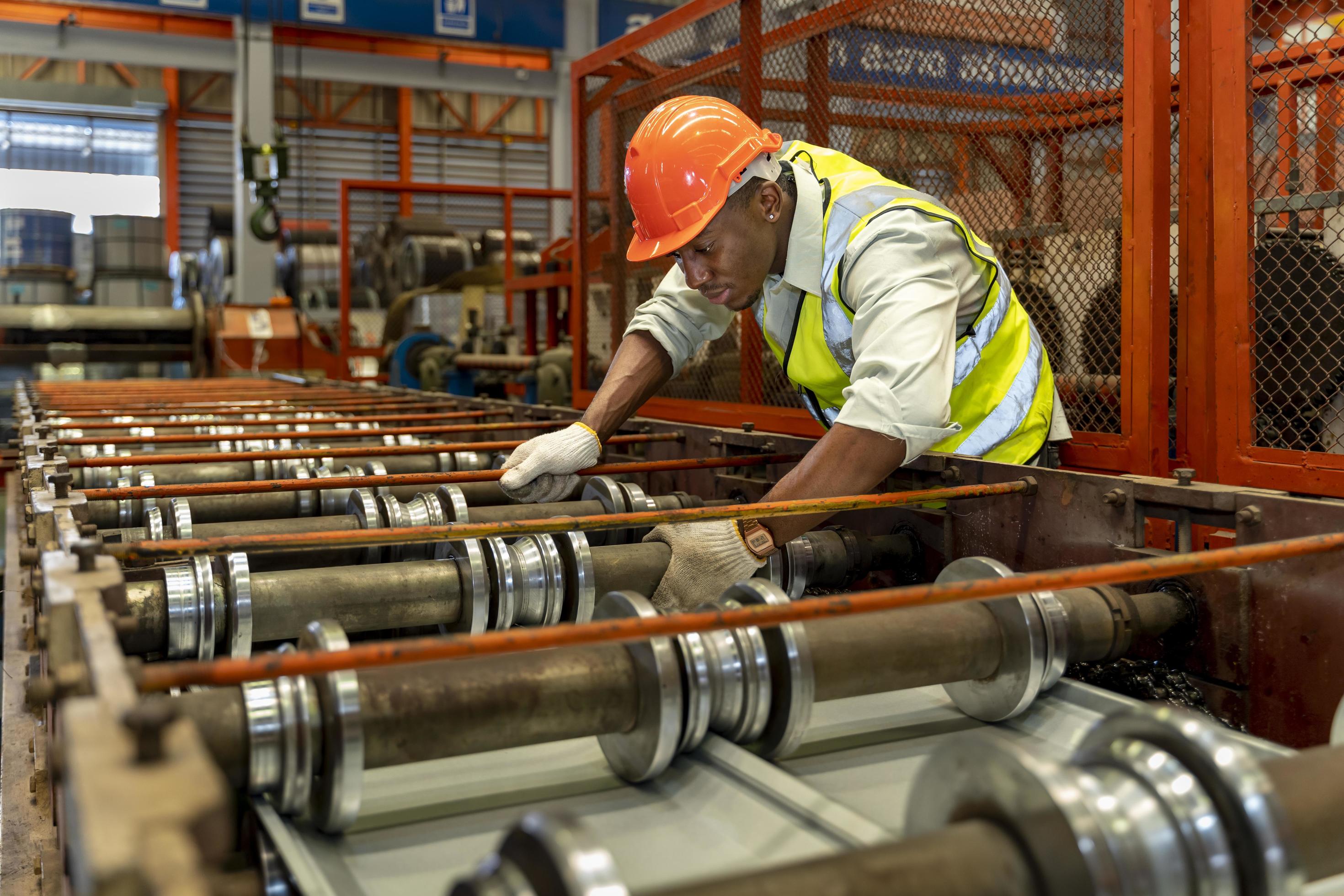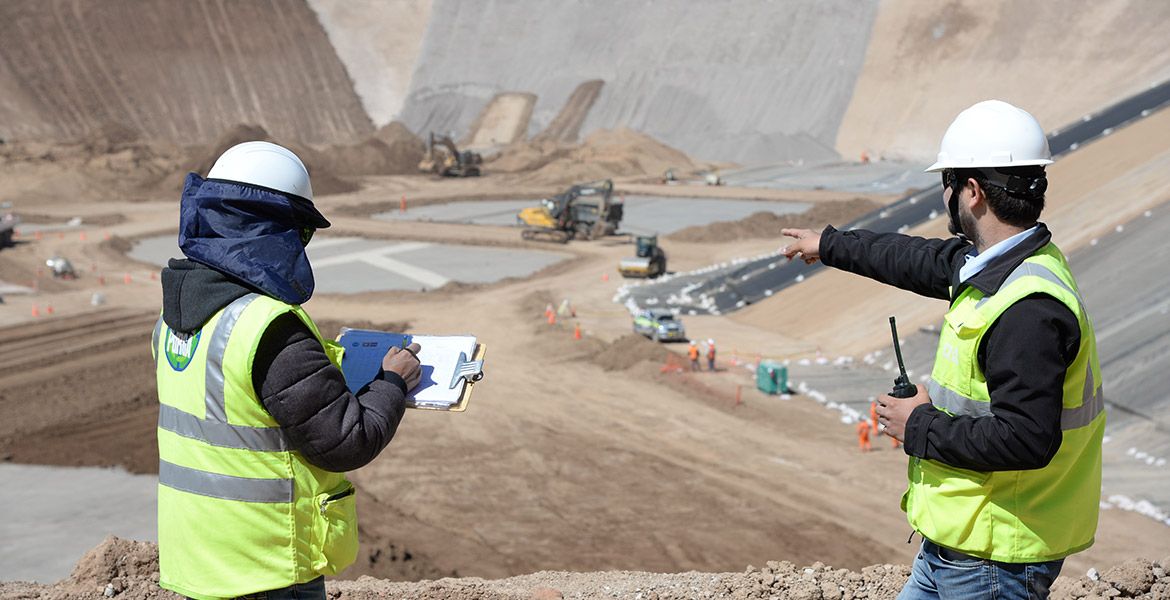
Since its founding in 1931, H. J. O’Connell Ltd. (HJOC) has been a leading figure within the heavy civil engineering and construction industry. Originally led by Montrealer Herbert John O’Connell, the company has spent the last 80-plus years growing to become one of the planet’s leading specialists in heavy civil infrastructure construction, mining applications and energy development, and is today a vital supplier to Canada’s vast and lucrative resource industries.
HJOC’s long and distinguished history makes it one of the oldest companies of its kind in Canada, with its continued prosperity being attributed to its innovative approach to business and our continued interest in growth and development. Today its diversified business includes expertise in mining, energy, roads and bridges, as well as municipal, industrial, northern and project management related work.
HJOC’s record for delivering first-class quality and value for money is reflected in its blue chip client base, particularly when it comes to the mining and energy sectors. Said list includes the Iron Ore Company of Canada, ArcelorMittal, Wabush Mines, Manitoba Hydro, Abitibi Consolidated, Fortis Inc., Vale Inco, Voisey's Bay Nickel and a host of others. Since 31 August, 2011, HJOC has continued its important work, as part of Bird Construction, one of Canada’s leading national general contractors.
In the last decade in particular HJOC has reaffirmed its position as a leading player when it comes to major mining, heavy civil and hydroelectric projects. Such has been the exponential growth of the business that just ten years ago the largest projects it was undertaking were valued at between $10 and $20 million, whereas today it can be found pursuing contracts valued at up to $1 billion.
The company as it exists in 2014 operates a modern fleet of over 300 pieces of mining and construction equipment. Recent additions to this fleet have included hydraulic excavators and off-highway tricks, some of which are among the largest owned by any Canadian contractor. Together HJOC’s fleet is capable of moving in excess of four million tonnes of material per month on a given project. Its full range of earthmoving equipment is also boosted by the company’s utilisation of the latest in equipment management techniques, for example its sophisticated computerized preventative maintenance program.
For a great deal of time throughout the company’s history mining has provided the bread and butter for the business, a fact that has remained the case right through the most recent growth cycle between 2010 and 2012 when demand from existing clients increased once again. In the last ten years however HJOC has made a concerted effort to diversify as a business and it is this willingness to evolve as a company that has resulted in heavy civil and hydroelectric projects becoming a more regular source of activity and income.
Throughout its long history, HJOC has developed considerable expertise when it comes to servicing Canada’s mining industry, with mining related work continuing to comprise the single largest sector of the firm’s business activities. As is to be expected for a company as well regarded as HJOC, it has successfully completed a diverse range of mining projects, from overburden stripping to the construction of dams and dykes for tailings containment, and the foundation of pollution control structures.
When it comes to HJOC’s open pit mining work, perhaps the best example would be its operation of Fire Lake Iron Ore Mine on behalf of ArcelorMittal. It was in 2006 that the company was awarded the contract to operate the mine on a seasonal basis, from May to November. The operation includes drilling, blasting, loading and hauling of the iron ore to a rail spur where it is loaded onto trains. These trains transport the ore to ArcelorMittal’s primary mine, Mont Wright, for processing. In 2010, HJOC was awarded an extensive of the contract for a further five years.
Fire Lake Iron Ore Mine has been responsible for producing between ten and 15 percent of the iron ore concentrate that ArcelorMittal produces in Canada. As a satellite mine connected to Mont Wright, transportation of this iron ore concentrate to the processing plant is of critical importance. There is only one train track between the two sites and it is HJOC’s job to ensure that there is a continuous flow of ore from one to the other. Since it began operating the mine in 2006, the company has not had a single train arrive at Mont Wright without ore, all the while lowering its loading times. Needless to say therefore that ArcelorMittal has always been very pleased with how the project has progressed.
At Mont Wright itself HJOC is responsible for overburden stripping at the mine, a project that has been ongoing since 1989, with the exception of 1992 and 1993. The productive equipment fleet at the Mont Wright stripping project includes up to 20 off-highway trucks in the 50 and 100-tonne sizes, matched with excavators in the eight and 14 cubic yard range. Since the overburden stripping project began, the strategy adopted by HJOC has resulted in “on time, on budget” performance which has resulted in a win-win scenario for all parties.
A further overburden stripping project of note can also be found occurring in Labrador City, Newfoundland and Labrador, of behalf of the Wabush Mines since 1968. Annual contracts between the two range from 1.0 to 4.0 million tonnes of overburden material, with the production equipment fleet used for this work including off-highway Cat 777 trucks, Komatsu PC 2000 excavator, Hitachi 1200 excavator, Cat D8 bulldozers and Cat 16 H graders.
One other area of the company’s work that is of particular importance is its Tailings Confinement Programme. This project began in 1981 and has been continuous since 1985. It has seen HJOC take responsibility for the construction of dams, dykes and canals on behalf of ArcelorMittal, which are used to confine the red water and mine tailings within a closed loop basin. This has been a hugely successful and important area of work for HJOC and one that continues to evolve as the volume of tailings storage requires increasing.
In addition to its work in the mining sector, and its countless other successes in various industries, HJOC is rapidly becoming the “go to” company when it comes to Canada’s hydroelectric development projects. At the heart of this is a well-trained team of management and skilled trades personnel that possesses extensive experience in the construction of powerhouses and dams.
The most recent hydroelectric project that HJOC has completed work on is the Lower Churchill Project taking place in Labrador. This particular project is aimed at developing the remaining 35 per cent of the Churchill River that has not already been developed by the Churchill Falls Generating Station. Its two installations at Gull Island and Muskrat Falls will ultimately boast a combined capacity of more than 3,074MW and have the ability to provide 16.7TWh of electricity per year. HJOC’s portion of the civil works, which included drill/blast, excavation and the construction of roller compacted concrete (RCC) dykes was completed in 2013.
Another example of the company’s work on such major projects would be its efforts on the Wuskwatim Generation Project. A result of close to a decade of planning, studies, negotiations and environmental assessments, the Wuskwatim Generation Project is a 200MW run-of-river hydroelectric generating station being developed on the Burntwood River at Taskinigup Falls, located in the Nelson House Resource Management Area. This type of project design creates a smaller environmental footprint in comparison to traditional hydroelectric dams, with the Wuskwatim Project set to cause less than one-half of one square kilometre of flooding once operational, the least amount of flooding of any hydro project in the entire Province.
Safety is the core value of HJOC. Through a cooperative attitude and empowering all workers to be proactive safety leaders, the vision of an accident-free workplace is seen as a realistic and obtainable goal. H.J. O'Connell Ltd.'s Environment, Safety and Health - Loss Control Program meets, and often exceeds, the demanding standards and requirements enacted by legislation and/or established by industry and project owners.
Given the nature of the work carried out by the company, the concept of sustainability comes high upon the list of values that HJOC holds dear. With every project it undertakes, HJOC enters into its work with the vision of leaving a site or location in the best condition possible. This is the approach it takes right from the onset of the planning stages of a job and its desire to leave an area in as pristine a condition as possible has given rise to numerous environmental and health and safety initiatives and programmes over the years.
Looking towards the future, HJOC’s first task will be to ensure that with its existing portfolio of projects continue to improve when it comes to the level of high standards that HJOC adheres to, while at the same time the company will look to improve further upon the quality of its work and seek out further efficiencies across the business. Meanwhile, HJPOC continues to aggressively pursue several other projects throughout Canada, projects that it hopes will contribute to the growth of the business in the latter stages of 2014 and beyond.
Written by Will Daynes, research by Stuart Platt
DOWNLOAD
 HJOC-Americas-Mining-Jun14-Bro-s.pdf
HJOC-Americas-Mining-Jun14-Bro-s.pdf













